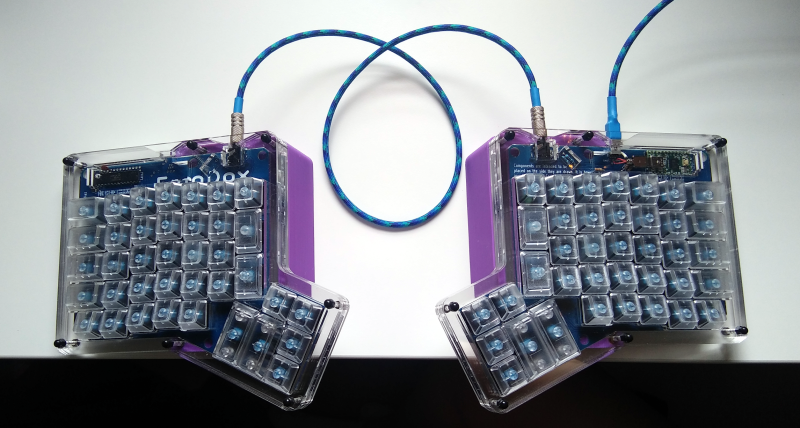In the last installment, I told you I was building an open-source, split, ortholinear keyboard called the ErgoDox. I’m doing this because although I totally love my Kinesis Advantage, it has made me want to crack my knuckles and explore the world of split keyboards. Apparently there are several of you who want to do the same, as evidenced by your interest in the I’m Building an ErgoDox! project on IO. Thank you!
Well boys and girls, the dust has settled, the soldering iron has cooled, and the keycaps are in place. The ErgoDox is built and working. Now that it’s all said and done, let me tell you how it went. Spoiler alert: not great. But I got through it, and it keyboards just like it’s supposed to. I’m gonna lay this journey out as it happened, step by step, so you can live vicariously through my experience.
Ode to Diodes
It all starts with the diodes. Every switch gets a diode because of the way keyboard controllers work to detect key presses. When every switch has a diode, there should never be any unintended keystrokes on the screen, a problem known as ghosting. You should also be able to press as many keys as you want at the same time, and they will all register correctly with none missed. If your keyboard does this, it has n-key rollover.
I could have had this keyboard done so much sooner if I had just calmly set aside the SMD diodes that came with my components kit and used through-hole from the start. But no, I had to try soldering 76 of them by hand without solder paste. It went pretty well considering my chisel tip and .32 diameter solder. Continuity checks indicated that I hadn’t managed to fry any of them with heat. But then I started to worry that they just weren’t well-soldered. And why start a build with 152 possible points of failure?
I got through one and half boards worth before I talked myself into switching to through-hole. I’m glad I did, because I don’t mind soldering THT at all, and diodes are cheap in either form. And you know what else? The clear bodies of through-hole diodes just add to the a e s t h e t i c. Yeah, let’s go with that.
Flip. The Boards. Over.
 I wish I could insert siren emoji around this section. Because if you take anything at all away from this story, it should be this part. Remember back in the first post when I said that the PCBs for both halves are exactly the same, and that you use one side for the left hand and one side for the right?
I wish I could insert siren emoji around this section. Because if you take anything at all away from this story, it should be this part. Remember back in the first post when I said that the PCBs for both halves are exactly the same, and that you use one side for the left hand and one side for the right?
Once the diodes are soldered, it’s …read more
Source:: Hackaday

